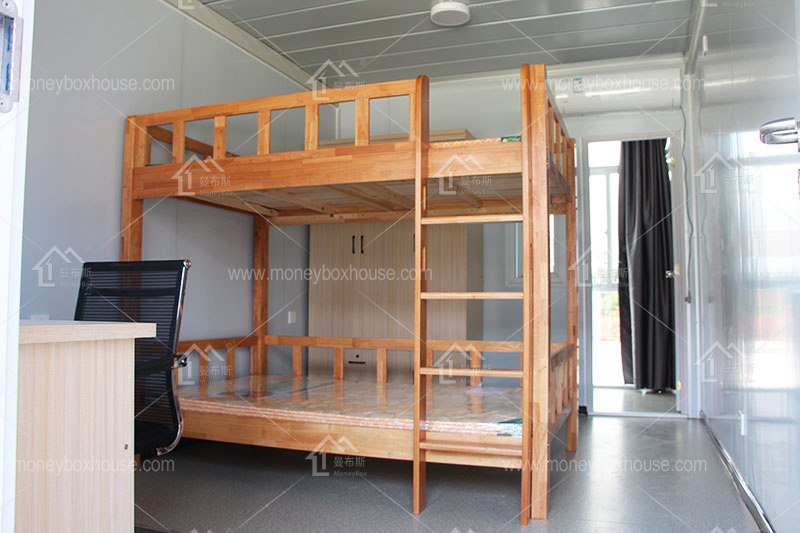
As a project manager, I live by one rule: "The cheapest option is almost always the most expensive."
Nowhere is this truer than in remote worker accommodation.
We've all seen the spreadsheets. A procurement officer finds a prefab unit for $2,000. It looks like a huge win. Then, the logistics quotes come in. The units are bulky and can only ship 2 per container. The assembly requires a specialized team. The insulation is so thin that your on-site generators run 24/7 just to keep them habitable.
By Day 60, that "$2,000" unit has a Total Cost of Ownership (TCO) of $10,000.
This guide is for the professionals who understand that "cost-effective worker housing" isn't about the unit price. It's about the total project cost. As a manufacturer of multiple solutions, here is how we break down the real costs of portable site housing.
Deconstructing the "Costs of Portable Site Housing Units"
Your total cost is a 4-part equation. A failure in one inflates all the others.
1. Freight & Logistics Cost (The #1 TCO Driver)
This is the killer. In remote-site logistics, space is money. How many units fit in one 40HQ container?
From our experience: For any camp over 50 people, a Flat Pack solution is almost guaranteed to have the lowest TCO, even if the unit price is slightly higher.
2. Labor & Assembly Cost
Time is money. How many man-hours does it take to make a unit "move-in ready"?
3. Operational Cost (Energy & Maintenance)
This is the cost that bleeds you dry for 3 years.
4. Lifecycle Cost (Redeployment)
Is this unit a one-time cost, or an asset?
-
Low-Lifecycle Cost: A galvanized steel-frame Flat Pack or Folding unit. It has a 15-20 year design life. After your 2-year project, you can disassemble/fold it and ship it to the next site.
-
High-Lifecycle Cost: A cheap, fixed building that you must demolish. The asset value is zero.
At-a-Glance: Which "Cost-Effective" Solution is Right for You?
| Your Priority |
The "Cost-Effective" Solution |
Why? |
| Lowest FREIGHT Cost (TCO) |
Flat Pack Container |
6-8 units per 40HQ container. |
| Lowest LABOR Cost (Speed) |
Folding Container |
10-minute install by 2 workers. |
| Lowest UPFRONT Price |
K-Type Prefab House |
Lowest material cost per sq. meter. |
| Lowest ENERGY Cost (OpEx) |
Insulated (PU/Rockwool) Unit |
Superior thermal performance. |
Case Study: "China Cheap Prices Fast Assembly"

Instead of just selling them our "cheapest" K-Type, we analyzed their project. The TCO solution was a blend:
-
-
This blended approach delivered "Fast Assembly" where it mattered (Day 1) and "Cheap Prices" where it mattered (TCO on the main shipment).
Conclusion: Stop Buying "Cheap," Start Buying "Smart"
True "cost-effective worker housing" is a solution that is cheap to run, not just cheap to buy.
Don't let your project's budget be destroyed by a rookie procurement mistake. Look past the unit price and analyze the total cost of logistics, labor, and operations.
As a full-line manufacturer, we don't just sell you the "cheap" box; we help you design the "smart" solution.
Frequently Asked Questions (FAQ)
1. How much does a portable site housing unit cost? A basic unit price can be misleading ($2,000 - $5,000), as it's only 30-50% of the total landed cost. The real cost depends on shipping density (Flat Pack is best), insulation (PU/Rockwool vs. EPS), and interior fit-out. Always request a "TCO" estimate, not just a unit price.
2. What is the absolute cheapest temporary housing for construction sites? The lowest upfront material cost is typically a K-Type Prefabricated House. However, this solution has the highest on-site labor cost (requires days to build). For a balance of low upfront cost and fast assembly, a Flat Pack Container is often the smarter choice.
3. How can I get affordable temporary housing for construction sites? The key is planning.
-
Buy in bulk: Order all units at once.
-
Prioritize Freight TCO: Choose Flat Packs (6-8 units/container) for your main camp.
-
Spec Right: Don't over-insulate for a temperate climate, and don't under-insulate for an extreme one.
-
Choose an Experienced Supplier: A supplier who understands logistics, like
Moneybox, will save you from costly customs and freight errors.

